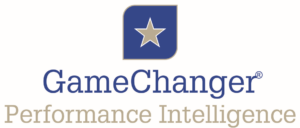We worked with a leading Australian rules football team in a Grand Final season. Our task before the Grand Final was to assess the decision-making capacity of the opposing team to inform a strategy for the Final.
We identified four players who played significant roles in the opposing team’s pattern of play. Our team allocated an assistant coach to monitor their performances during the game. Tactical changes during the game aligned with the pre-game strategic preparation.
For this partnership we used our OrganicsTM , InsightTM , and Live Real-Time Game OnTM programs.
 We worked with a leading premiership association football club to profile the decision-making capabilities of a senior player with extensive international experience. We were able to demonstrate the significant role the player had in the flourishing of the team. This added to the club’s understanding of the player’s performances and to conversations about how to optimise his impact. We used our Decision-Making and Momentum programs in this partnership.
We worked with a leading premiership association football club to profile the decision-making capabilities of a senior player with extensive international experience. We were able to demonstrate the significant role the player had in the flourishing of the team. This added to the club’s understanding of the player’s performances and to conversations about how to optimise his impact. We used our Decision-Making and Momentum programs in this partnership.
We worked with another premiership association football club to evaluate and monitor the performance of a player thought to be an influential player in the team’s preferred pattern of play. We noted variability in his performance that led to the provision of support for him to enhance his performance. We used our Decision-Making and Momentum programs in this partnership.
We have worked with an international rugby union team to provide a comprehensive analysis of decision-making abilities of players identified by the coach for long-term development as spine players within the team. We have undertaken the same kind of audit with a leading rugby league team too. We have used our OrganicsTM program in these partnerships.
Momentum
Stop
We worked with a women’s basketball team in a rebuilding season. The team had a roster of young players with limited experience of senior basketball. In the final week of the season, three of the team’s more experienced players withdrew through injury from a game against the league’s minor premiers. We worked with the coach to develop a ‘stop momentum’ approach to the opponents’ game play. An anticipated whitewash became the closest game of the year. We provided real-time support within game to inform the tactical deployment of the team.
Trigger
We worked with an Australian rules football team to develop intensity in attack and goal kicking accuracy. Our approach supported a team able to score in concentrated blocks of game time.
With another AFL team, we explored how to build creative threats to score. This led to extensive discussions and observations of player characteristics and potential. One outcome was a positional change for a player and the transformation of the team’s creative threat capability. A second player was given the opportunity to engage in unstructured plays that enhanced his creative decision-making ability.
Exposure
We worked with an association football team to address its exposure in game play. We focused on the time after scoring in order to reduce the likelihood of conceding a goal.
We worked with an international judo player to address exposure whilst ahead in a contest.







